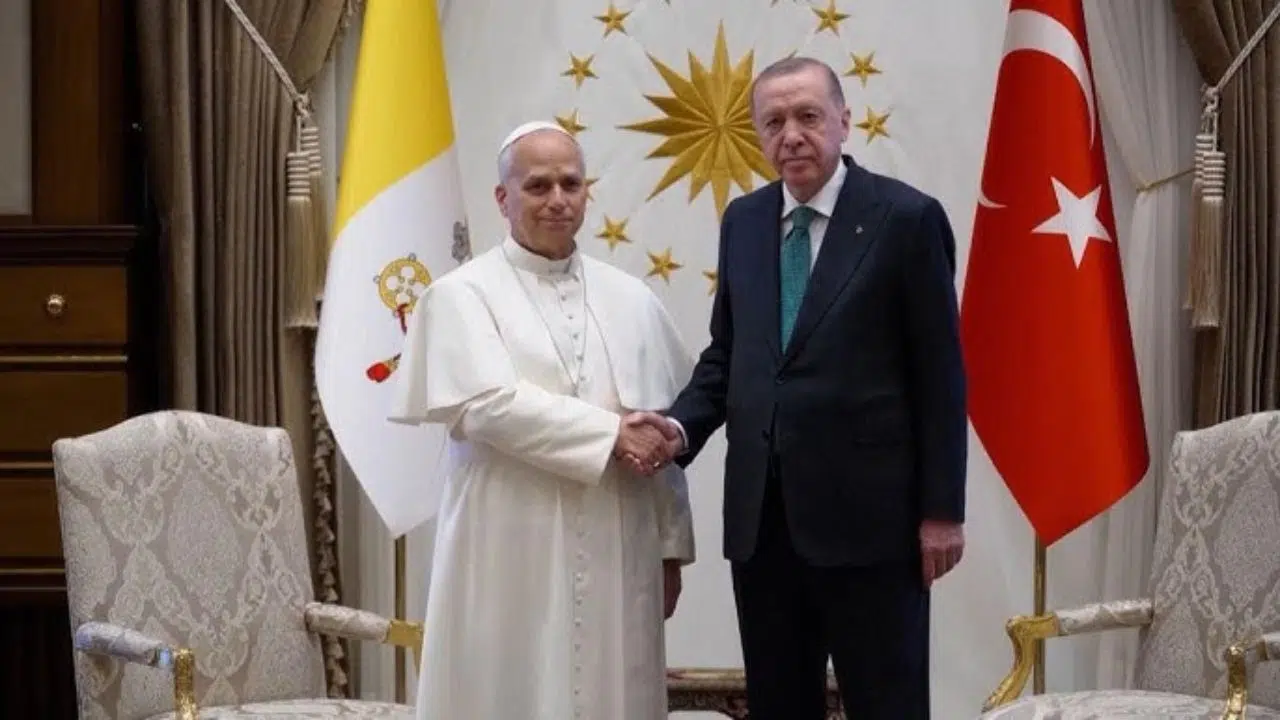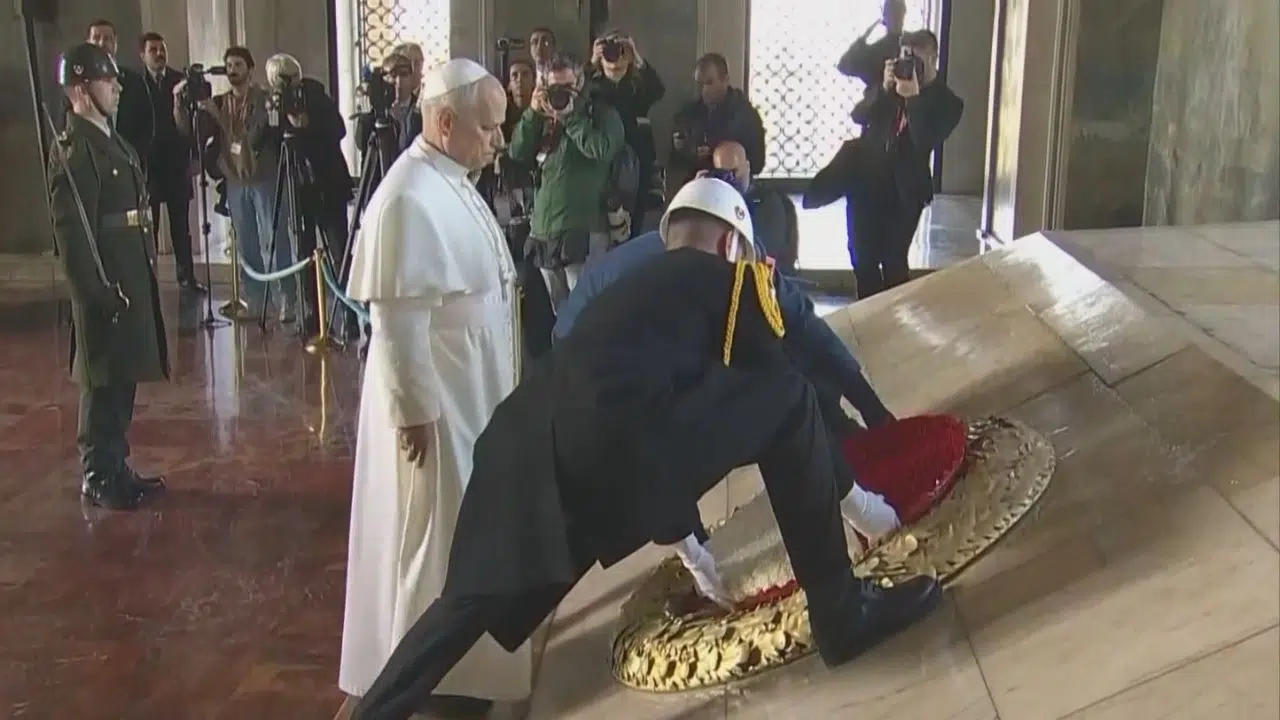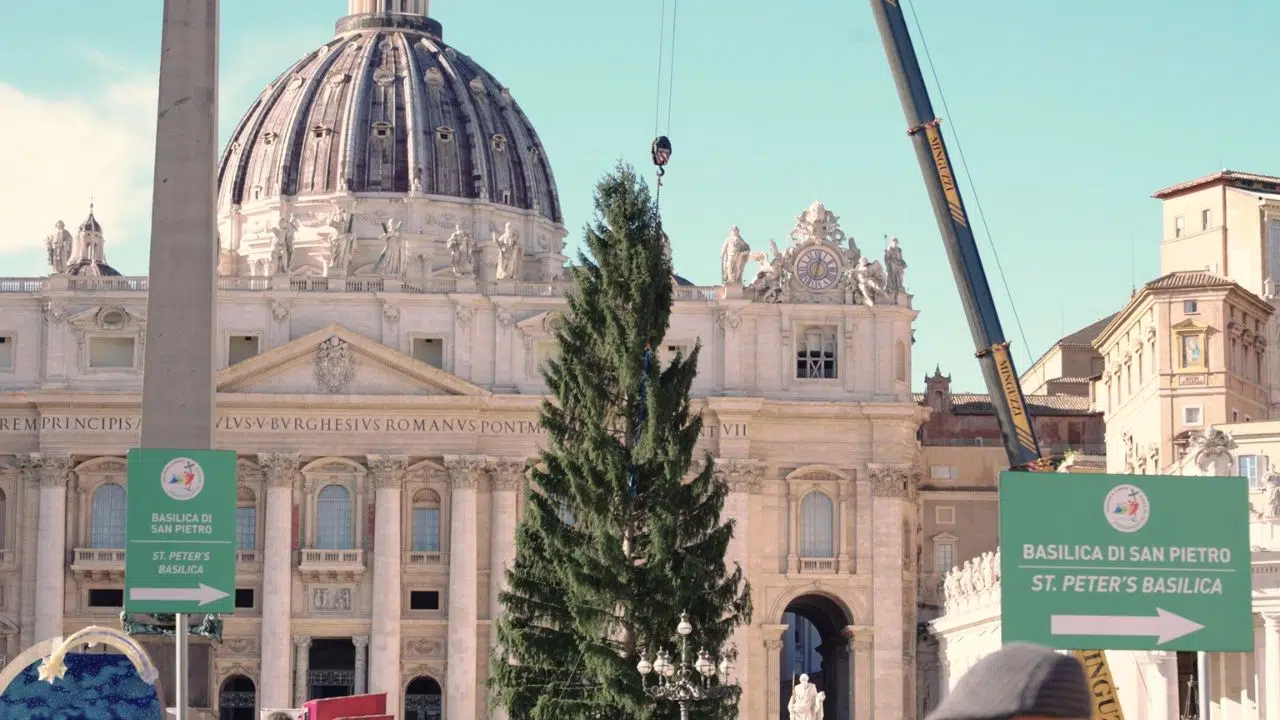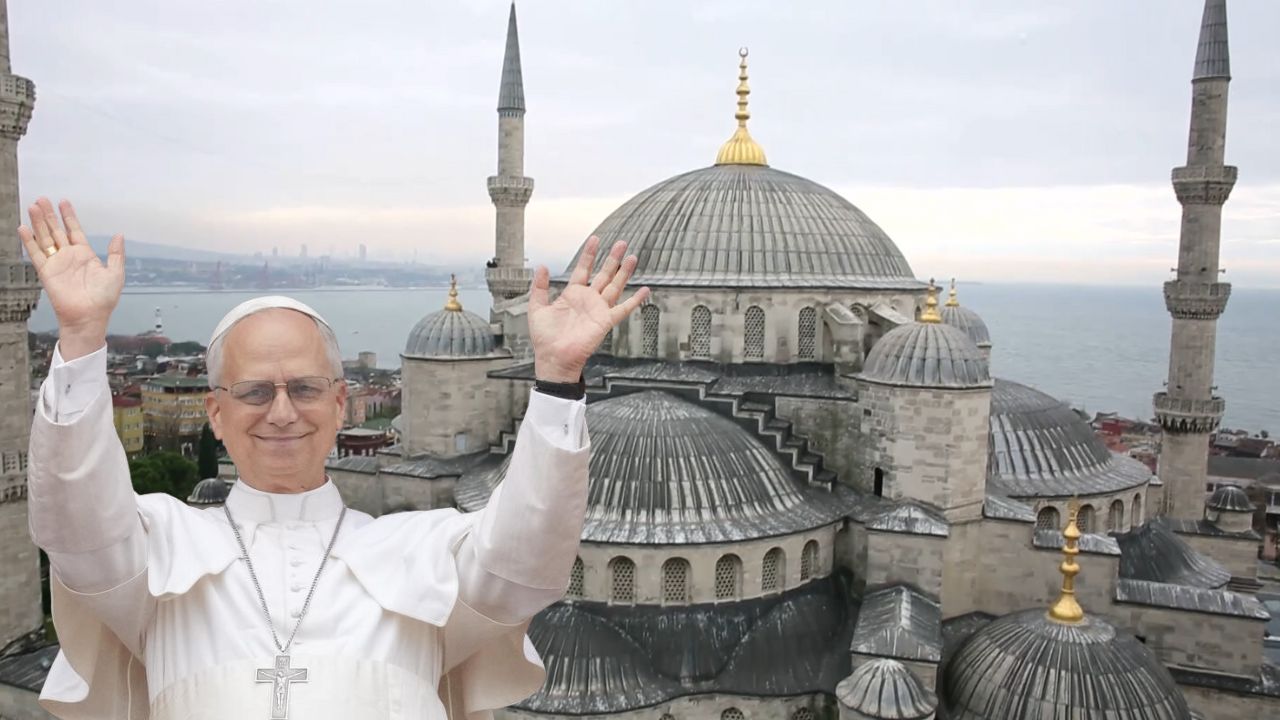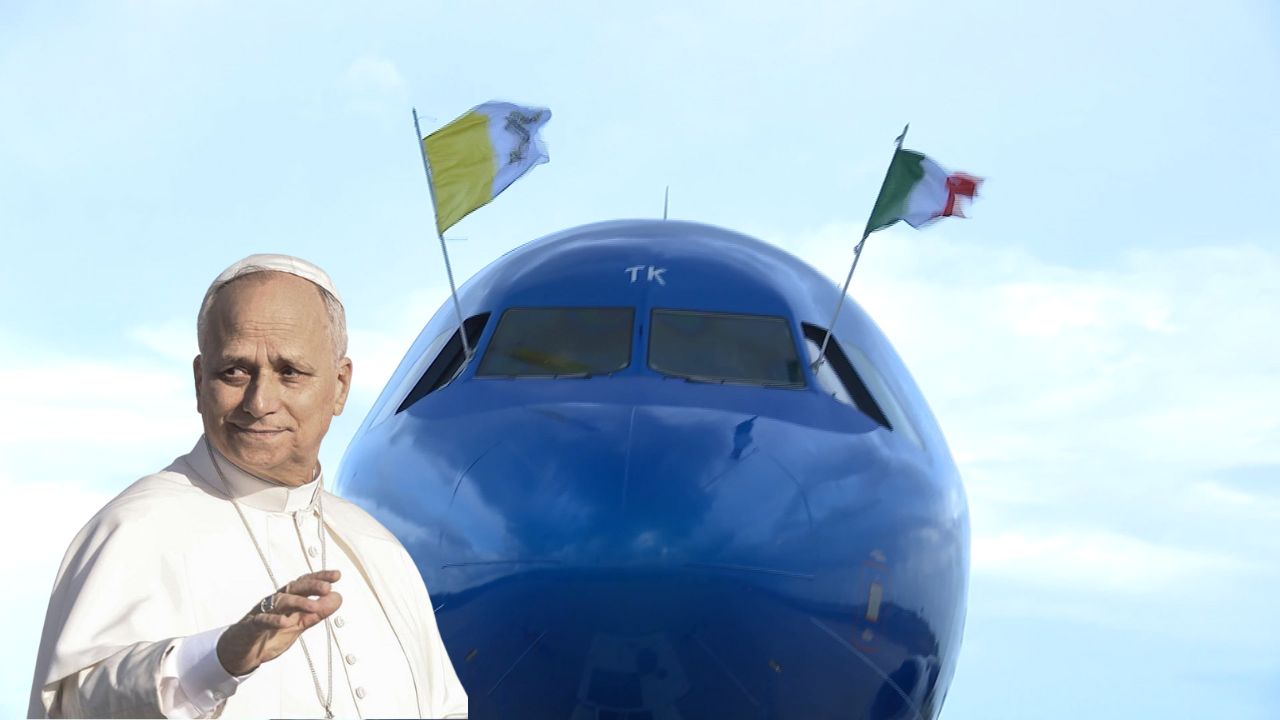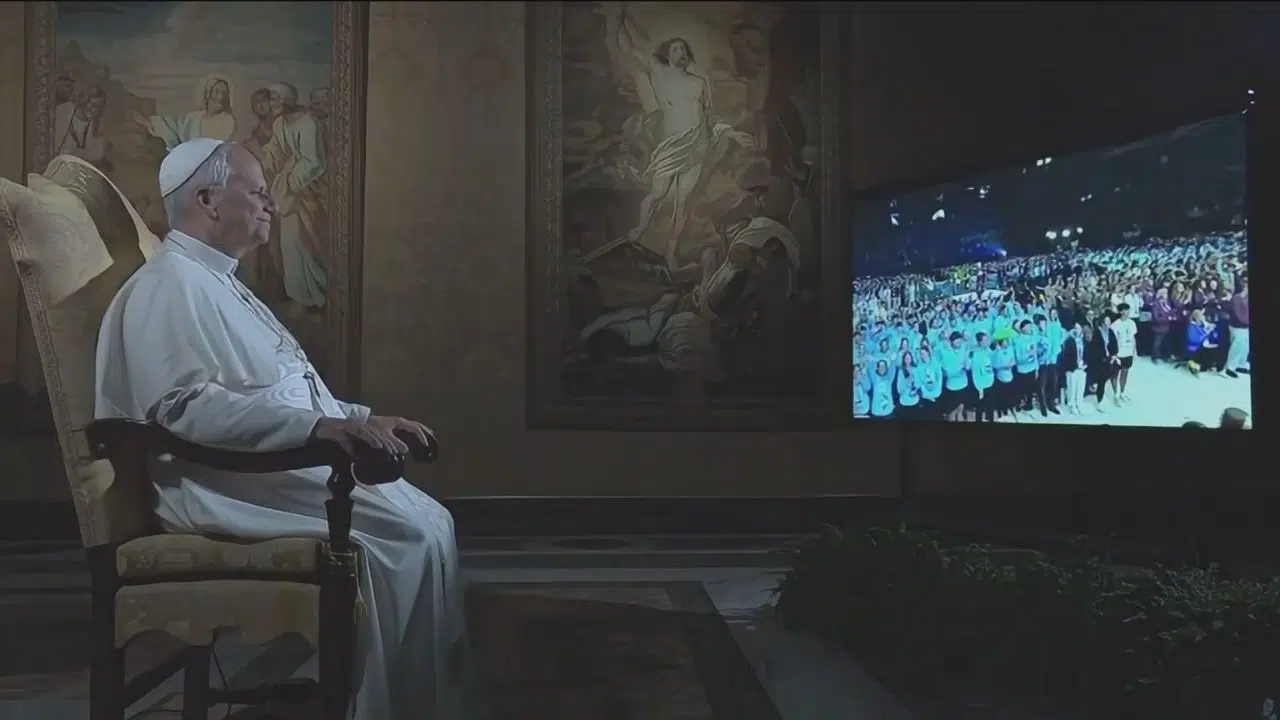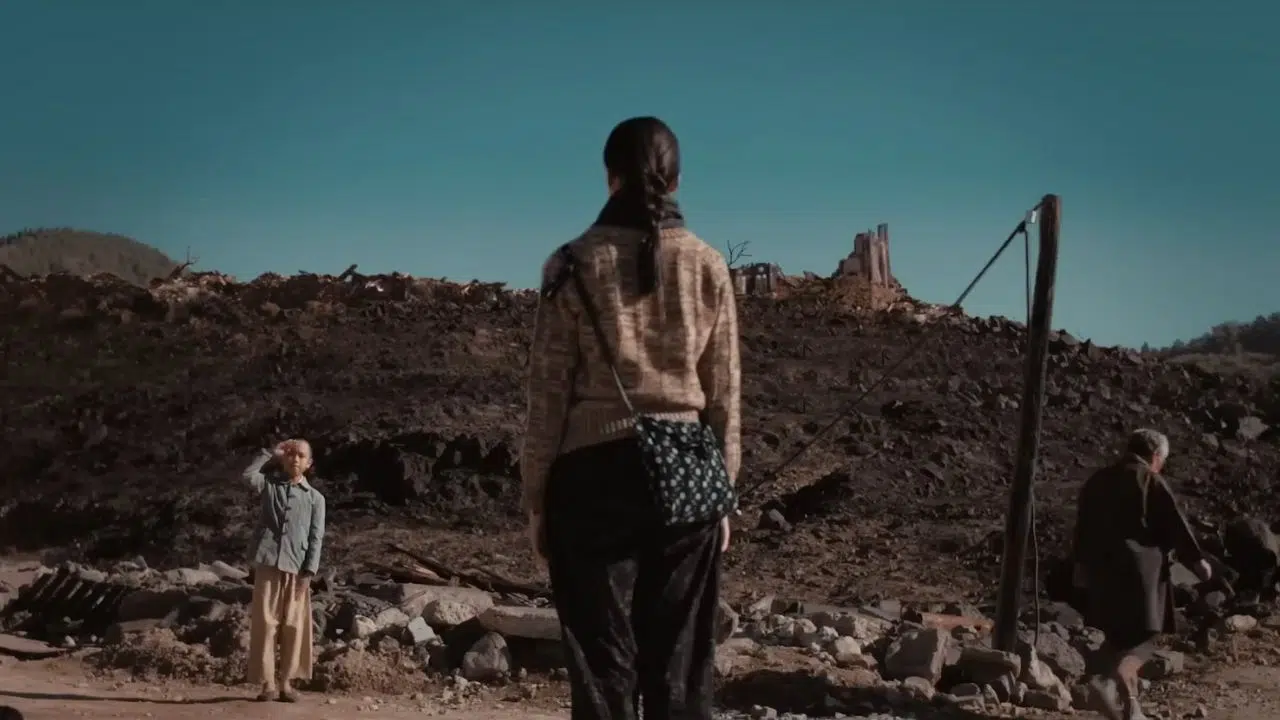What began as a Christian basilica in Constantinople…
FILIPPO FORLANI
Historian, Pontifical University of the Holy Cross
It was built in the 4th century, shortly after Constantine moved the imperial seat—around the year 360 AD, and it had the classic shape of a basilica.
Was later destroyed twice by major fires...
FILIPPO FORLANI
Historian, Pontifical University of the Holy Cross
It was then that Emperor Justinian, in the 6th century, decided to build a new basilica that was very large and spacious.
Dedicated to wisdom, the Hagia Sophia became an imperial symbol, uniting the East and the West. It became the largest church in the world for nearly 1,000 years, with a vast dome of 43 meters.
FILIPPO FORLANI
Historian, Pontifical University of the Holy Cross
At the end of the construction, Justinian uttered the famous phrase as he contemplated this marvel: “Solomon, I have surpassed you.”
Originally Orthodox basilica, it later became a mosque in 1453, when Constantinople was conquered.
FILIPPO FORLANI
Historian, Pontifical University of the Holy Cross
The sultan ordered that the basilica, which was the largest religious building in the entire city, be converted into a mosque. However, at the same time, he ordered that all the mosaics be saved from destruction.
Thus, began the coexistence of Christian and Islamic elements in Turkey. All of this remained until Atatürk founded modern Turkey, turned it into a secular state, and decided that Hagia Sophia would become a national museum, without any religious affiliation.
However, later in 2020, the current president, Erdoğan, reconverted it back into a mosque.
NIKOS TZOITIS
Advisor to the Ecumenical Patriarchate in Rome
Therefore, the Turkish state’s economy is in economic difficulty. With a devalued lira, a stagnant economy, and rising unemployment, he had to seek support on religious grounds.
And that is exactly what happened. Hagia Sophia is now once again a Muslim place of worship. Pope Leo XIV does not have a visit to it on his agenda, despite the fact that all popes since Pope Paul VI have gone there.
FILIPPO FORLANI
Historian, Pontifical University of the Holy Cross
So indeed, going to a place that has returned to being a mosque might, from the perspective of inter-religious dialogue, I don’t know, be somewhat complicated. And that’s why I imagine Pope Leo preferred not to go there.
JUAN ANTONIO CABRERA
Pontifical Patristic Institute Augustinianum
The reason is probably diplomatic, not wanting to hurt certain sensitivities. Because recently, in the past few years, the Hagia Sophia went from being a museum to a mosque, and with its function as a mosque, the mosaics were covered. So it is probably a matter of prudence.
The amount of Christians in Turkey are only around 100,000, of whom only 33,000 are Catholics. This means there are 4 Catholics for every 10,000 people in the country. This results in only roughly 40 parishes across the entire territory.
And if there is one point shared by Latins and the Orthodox, it is the Nicene Creed, which originated in what is today the Turkish city, Iznik, what was originally the ancient city, Nicaea.
JUAN ANTONIO CABRERA
Pontifical Patristic Institute Augustinianum
The basis, of course, is to start from the symbol of faith, the Creed. It is what unites us, and all of that is contained in the Nicene symbol, later developed in Constantinople, which refers to the Trinity—Father, Son, and Holy Spirit.
That is also the main reason for Pope Leo’s trip to Turkey: a major ecumenical gathering to celebrate the 1700th anniversary of that historic moment, which Catholics and Orthodox now celebrate together.
CA
